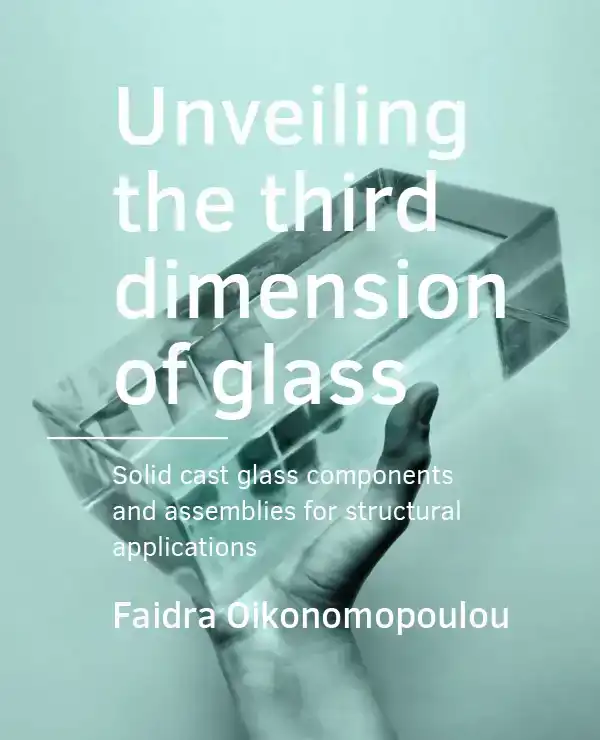- Engels
- Pockets
- kunst algemeen
- bouwkunst, archit.
- UNVEILING THE THIRD DIMENSION OF GLASS
OIKONOMOPOULOU, FAIDRA
UNVEILING THE THIRD DIMENSION OF GLASS
29,95incl BTW
Vertrouwd sinds 1927
Persoonlijke aandacht en advies
Vanaf 17,50 gratis verzenden NL & BE
Meer dan 150.000 artikelen online
Omschrijving UNVEILING THE THIRD DIMENSION OF GLASS
Over the last decades, the perception of glass in the engineering world has changed from that of a brittle, fragile material to a reliable structural component of high compressive load-bearing capacity. Although the structural applications of glass i
n architecture are continuously increasing, they are dominated by a considerable geometrical limitation: the 2-dimensionality imposed by the prevailing float glass industry. Cast glass can overcome this limitation: solid 3-dimensional glass component
s of virtually any shape and cross-section can be made. Owing to their monolithic nature, such components can form robust repetitive units for the construction of free-form, allglass structures that take full advantage of the compressive strength of
glass; a solution little explored so far. Subsequently, there is a lack of design guidelines in the use of cast glass as a structural material. Scope of this research is, therefore, to investigate both the potential and the limitations of employing s
olid cast glass components for the engineering of transparent, 3-dimensional, glass structures in architecture. Accordingly, the design, development, prototyping and experimental validation of two distinct cast glass building systems for self-support
ing envelopes, from unit level to the entire structure, are presented. First, an adhesively-bonded solid glass block system, using a colourless adhesive as an intermediary, is developed and applied in the Crystal Houses facade. Following, a dry-assem
bly, interlocking cast glass block system, employing a colourless dry interlayer, is explored as a reversible, circular solution. The results of this dissertation can serve as design guidelines for future structural applications of cast glass in arch
itecture.
n architecture are continuously increasing, they are dominated by a considerable geometrical limitation: the 2-dimensionality imposed by the prevailing float glass industry. Cast glass can overcome this limitation: solid 3-dimensional glass component
s of virtually any shape and cross-section can be made. Owing to their monolithic nature, such components can form robust repetitive units for the construction of free-form, allglass structures that take full advantage of the compressive strength of
glass; a solution little explored so far. Subsequently, there is a lack of design guidelines in the use of cast glass as a structural material. Scope of this research is, therefore, to investigate both the potential and the limitations of employing s
olid cast glass components for the engineering of transparent, 3-dimensional, glass structures in architecture. Accordingly, the design, development, prototyping and experimental validation of two distinct cast glass building systems for self-support
ing envelopes, from unit level to the entire structure, are presented. First, an adhesively-bonded solid glass block system, using a colourless adhesive as an intermediary, is developed and applied in the Crystal Houses facade. Following, a dry-assem
bly, interlocking cast glass block system, employing a colourless dry interlayer, is explored as a reversible, circular solution. The results of this dissertation can serve as design guidelines for future structural applications of cast glass in arch
itecture.
Specificaties
- MerkBK Books
- GroepKUNST ALGEMEEN (640)
- Barcode9789463662208
- LeverstatusActief
Reviews
0.0/5.0
Gemiddelde uit 0 reviews
Meest behulpzame reviews
Nog geen reviews geschreven


